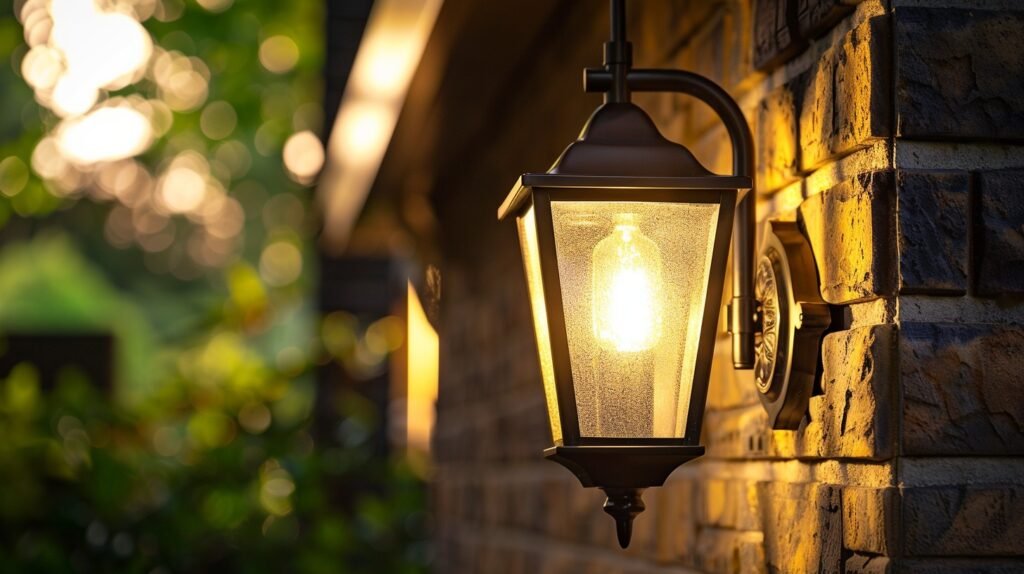
We all know that proper maintenance can extend the life of our gadgets but did you know that it can extend the life of your solar lantern by up to 5 years? That’s right! As more people embrace sustainable lighting solutions, knowing how to care for these eco-friendly gadgets is crucial.
In this article, we’ll shed light on the top maintenance tips to keep your solar lanterns glowing strong. From the cleaning techniques to storage secrets, we’ve got you covered. Let’s dive in and make sure your nights stay bright!
What Are the Best Solar Lantern Maintenance Tips?
Solar lanterns are an incredible invention, combining traditional lanterns’ beauty with the sun’s eco-friendly power. But like any technology, they require proper care to function at their best. Here are the top tips to keep your solar lanterns shining bright:
1. Understanding Your Solar Lantern Components

Before we dive into maintenance, it’s crucial to understand what makes your solar lantern tick. Knowing the basic parts will help you take better care of your lantern:
- Solar Panel: This is the heart of your lantern, converting sunlight into electricity.
- Battery: Stores the energy collected by the solar panel.
- LED Lights: These energy-efficient bulbs provide the illumination.
- Housing: Protects all the internal components.
Each part plays a vital role in your lantern’s functionality. By understanding how they work together, you’ll be better equipped to maintain your solar lantern effectively.
2. Daily Cleaning Rituals for Optimal Performance
Keeping your solar lantern clean is one of the easiest and most effective maintenance tasks you can perform. Here’s how to do it right:
- Wipe down the solar panel: Use a soft, damp cloth to remove dust and debris from the solar panel gently. Avoid using harsh chemicals or abrasive materials that could scratch the surface.
- Clean the lantern body: Use a mild soap solution and a soft cloth to clean the lantern body. Be careful not to let water seep into the electronic components.
- Frequency: In dusty environments, clean your lantern weekly. In cleaner areas, monthly cleaning should suffice.
Remember, a clean solar panel is an efficient solar panel. Regular cleaning ensures your lantern can charge fully and provide maximum illumination.
3. Proper Charging Techniques to Maximize Battery Life
Charging your solar lantern correctly can significantly extend its battery life:
- Initial charging: When you first get your lantern, charge it fully for 24-48 hours before use.
- Sunlight exposure: Aim for 6-8 hours of direct sunlight daily. In winter or cloudy conditions, you may need to extend this time.
- Avoid overcharging: While most modern solar lanterns have overcharge protection, it’s best not to leave them in direct sunlight for extended periods after they’re fully charged.
Pro tip: Rotate your lantern every few hours during charging to ensure all sides of the solar panel receive equal sunlight exposure.
4. Storage Solutions to Prevent Damage
Proper storage is crucial, especially when you’re not using your solar lanterns regularly:
- Temperature: Store your lanterns in a cool, dry place. Extreme heat or cold can damage the battery and electronics.
- Humidity: High humidity can cause corrosion. Use silica gel packets in your storage container to absorb excess moisture.
- Long-term storage: If storing for several months, charge the battery fully first. Then, store the lantern in a dark place to prevent the battery from continuously charging and discharging.
Before storing, clean your lanterns thoroughly and ensure they’re completely dry to prevent mold growth.

5. Troubleshooting Common Solar Lantern Issues
Even with the best care, you might encounter some issues. Here are simple ways to tackle common problems:
- Flickering lights: This often indicates a weak battery. Try fully discharging and then recharging the lantern.
- Not holding a charge: Clean the solar panel and ensure it’s getting enough direct sunlight. If the problem persists, the battery might need replacement.
- Unresponsive solar panel: Check for physical damage or debris on the panel. If it’s clear and undamaged, the issue might be with the internal wiring or the battery.
Don’t be afraid to consult the manufacturer’s manual or customer service for persistent issues. Sometimes, professional help is the best solution.
6. Weatherproofing Your Solar Lanterns
While many solar lanterns are designed for outdoor use, extra weatherproofing can extend their lifespan:
- DIY water resistance: Apply a thin layer of clear, waterproof sealant around the edges of the solar panel and any seams in the lantern body.
- Protective coatings: Consider using a UV-resistant spray on the lantern body to prevent color fading and plastic degradation.
- Extreme weather use: In very hot climates, provide shade for your lanterns during the hottest part of the day. In cold climates, bring them indoors during freezing temperatures.
Remember, no lantern is completely weatherproof. Always check the manufacturer’s recommendations for outdoor use.
7. Battery Maintenance and Replacement
The battery is often the first component to wear out in a solar lantern. Here’s what you need to know:
- Signs of battery wear: Decreased run time, difficulty holding a charge, or swelling of the lantern body are all indicators that your battery might need replacement.
- Replacement process:
- Open the battery compartment (usually secured with small screws).
- Disconnect the old battery.
- Connect the new battery, ensuring proper polarity.
- Close the compartment securely.
- Disposal: Always recycle old batteries. Many electronics stores offer battery recycling services.
When replacing batteries, always use the type recommended by the manufacturer. Using the wrong type of battery can damage your lantern or create safety hazards.
8. Enhancing Solar Panel Efficiency
Maximizing your solar panel’s efficiency means more light for longer periods. Try these tips:
- Keep it scratch-free: Use a microfiber cloth for cleaning to avoid scratches that can reduce efficiency.
- Optimal positioning: Angle your lantern so the solar panel faces the sun directly during peak daylight hours.
- Use reflectors: In low-light areas, place reflective surfaces (like aluminum foil) around your lantern to direct more light to the solar panel.
Remember, even small improvements in solar panel efficiency can add up to significantly better performance over time.
9. Seasonal Maintenance Checklist
Different seasons bring different challenges for your solar lanterns. Here’s a seasonal guide:
- Spring:
- Deep clean after winter storage
- Check for any damage from winter weather
- Reposition lanterns for optimal spring sunlight
- Summer:
- Clean more frequently due to increased dust and pollen
- Provide shade during extreme heat to prevent overheating
- Take advantage of longer days for thorough charging
- Fall:
- Clean fallen leaves and debris from solar panels
- Adjust positioning for a lower sun angle
- Begin preparing for winter storage if necessary
- Winter:
- If using, clear snow and ice regularly from solar panels
- Bring lanterns indoors during extreme cold
- For storage, clean thoroughly and charge fully before putting it away
By following this seasonal guide, you’ll ensure your solar lanterns are always ready for use, no matter the time of year.
10. Extending the Lifespan of LED Bulbs
The LED bulbs in your solar lantern are designed to last for years, but proper care can extend their life even further:
- Understand LED lifespan: Most LEDs are rated for 50,000 to 100,000 hours of use. That’s 5.7 to 11.4 years of continuous operation!
- Prevent premature burnout: Avoid exposing your lantern to extreme temperatures or physical shocks, which can damage the LEDs.
- Dimming feature: If your lantern has a dimming feature, using it can extend LED life by reducing power consumption and heat generation.
While LED replacement is possible, it’s often more cost-effective to replace the entire lantern once the LEDs burn out, given their long lifespan.

Conclusion: Shine On with Well-Maintained Solar Lanterns
Maintaining your solar lanterns doesn’t have to be a dim experience! By following these 10 essential tips, you’ll keep your eco-friendly lights shining bright for years. Remember, a little care goes a long way in extending the life of your solar lanterns.
Regular cleaning, proper charging, and smart storage are the keys to long-lasting solar lanterns. By understanding how your lanterns work and addressing potential issues promptly, you’re not just maintaining a light source – you’re preserving a piece of sustainable technology that benefits both you and the environment.
By taking care of your solar lanterns, you’re not just ensuring bright nights – you’re contributing to a brighter, more sustainable future. So here’s to many more years of eco-friendly illumination. May your nights be bright, your carbon footprint small, and your solar lanterns always ready to light the way!



